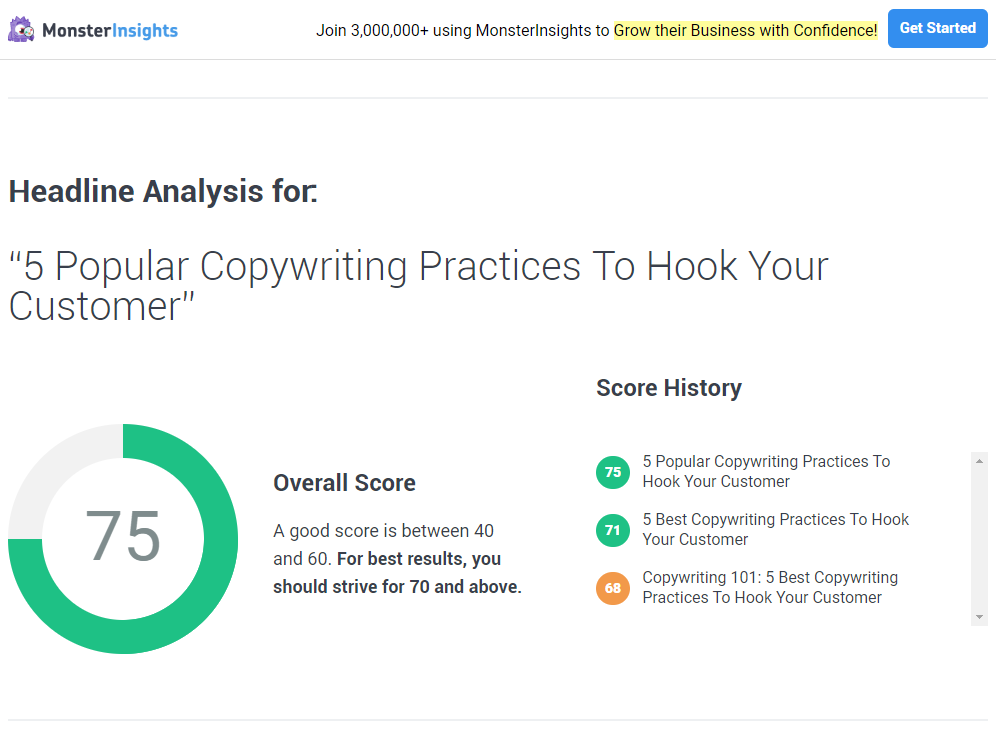
SEO. Headline creation. Image ALT tags. CTAs.
Phew! And that’s only a few things you need to know when writing great copy for your website or blog.
But before you get overwhelmed by the specifics involved with copywriting, let’s review some of the all-time basics. Below, find five of the best copywriting practices you should implement for each and every piece of content you create.
#1: Make It Relatable
Although you may know a lot about your industry, that’s not who you’re writing your copy for. Before even starting to write a piece of copy, you should have a firm content marketing strategy in place. And more important than anything, this needs to outline details about your target audience – or the particular consumer you want to reach with your brand.
Knowing specifics about your target audience – such as their demographics, education level, and familiarity with your industry – can help craft relatable content. Learn about their pain points and the language they use, then make sure your copy reflects both.
It can be easy to start using industry slang and jargon, but this can quickly distance your content from your target audience. Instead, use human terms to make your content as easy to understand as possible. Try to make it interesting, too – nobody likes reading boring copy, and that’s a quick way to lose your reader’s attention.
#2: Always Edit Like a Boss
Before you hit that publish button, you still have quite a bit of work in front of you! It’s now time to edit, then edit again. Get rid of any excess, avoid vague terms, and make your writing as direct as possible.
Ask yourself, is the content relevant, necessary, and does it provide value to your target audience? If yes, keep it! But if not, trim the fluff.
We always recommend waiting a day or two to look your piece over. Having a set of fresh eyes can help catch any spelling, grammar, or punctuation mistakes. You don’t want to risk a small (or large) mistake to take away from your content packing a punch!
Even better? Have a trusted colleague or friend give it a once over. Since you created the content, your eyes are more likely to skip over parts that may need correcting.
#3: Keep It Attractive
Sure, the words are key. But without readability, it’s going to be challenging to make your content clear and understandable.
Readability refers to how enjoyable and easy it is to read a piece of copy. There are several ways to go about accomplishing a high readability score, such as using:
- Short sentences and paragraphs
- Bulleted or numbered lists
- A variety of headlines (H1, H2, H3, etc.)
- Reader-friendly fonts
- White space to break up your copy
Again, there are tools available to make this step easy for you! This one by Readable unravels your content’s readability score (aim for grade level 7-8) and provides actionable insights, like writing style and text density issues.
#4: Call Out That Action!
Content always serves a purpose. Maybe you’re trying to encourage your reader to schedule an appointment, subscribe to your newsletter, or make a purchase. Whatever it may be, make it as easy as possible for them to complete that action.
A call to action (CTA) is the marketing term for using words to prompt a response. One of the simplest examples is “Buy Now,” with a link to the product or service. Some tips to keep in mind when crafting compelling CTAs:
- Keep it short and sweet
- Use the desired action at the start of the CTA (e.g., “buy,” “shop,” or “download”
- Provoke emotion or enthusiasm by using emotional words and phrases – or something even as simple as an exclamation point
- Include numbers when possible (e.g., “Get 20% Off Your Next Appointment!”
If you’re writing a blog post, a great spot for your CTA is in your conclusion. But for website copy, it can be on your homepage, in a sidebar, and even in a footer. Wherever you put one, include clear language and links to an active page. The last thing you want is for your link to lead to a 404 Error!
#5: Don’t Forget the Main Hook
A great copywriter knows that almost as much time needs to be spent generating a captivating headline as writing the bulk of the copy.
Why? Because your headline acts as the first point of contact between your copy and your target audience. Without an enticing one, you’re unlikely to hold your intended audience’s attention span long enough to read your first paragraph.
When generating headlines, try to appeal to a certain emotion or need, while making it captivating and concise. What’s great is that there are even some tools to help, like HubSpot’s Blog Ideas Generator. Using only a few nouns, you can quickly discover some headlines to get your creative juices flowing. Keep in mind that these suggestions should only be used as a starting point – they still need creativity on your end.
Headline length is also key. There’s a fine balance between creating a headline that’s too long – which can lead to confusion or boredom – or too short, which may not offer enough information to continue reading.
This headline analyzer tool can help you craft compelling headlines that are SEO-driven. It outlines an overall score and details such as character and word counts. It even offers a Search Preview, which showcases what your title will appear like in Google SERPs! This is especially helpful so that you don’t write a headline that gets cut-off.
Below, you’ll see how the title for this blog post ranked using this tool.

Copywriting 101: Key Takeaways
Good copywriting makes a lasting impression. It can get people to feel, think, or respond – or, the ultimate prize: convert.
But it doesn’t come easily. Above, we’ve described some of the five best copywriting practices to use when writing truly memorable copy: writing clear, error-free content that’s relatable and has a strong CTA and headline.
And remember, if you’re ever stuck, there’s an expert copywriter right here willing and able to help!
